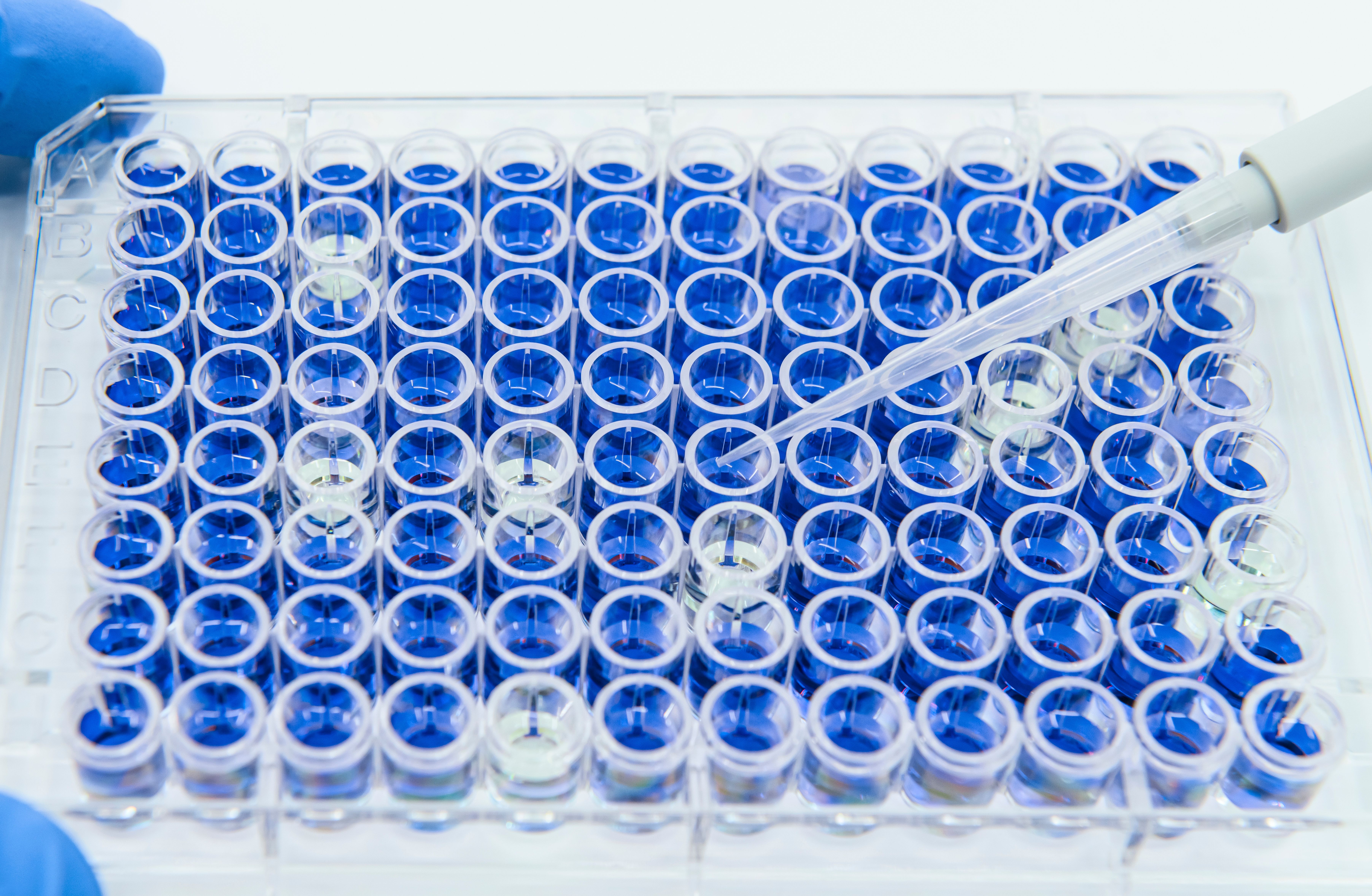NIR Tested for Drug Screening Capabilities
Scientists from the State University of Campinas–UNICAMP, the Federal University of Viçosa, and the National Institute of Criminalistics in Brazil, recently published a paper in Spectrochimica Acta Part A: Molecular and Biomolecular Spectroscopy on how near-infrared (NIR) spectroscopy could potentially be effective at detecting ectasy in samples (1).
Cell viability assay by 96 well micro plate for Drug screening | Image Credit: © HYUNGKEUN - stock.adobe.com

Ecstasy is one of the most widely distributed illicit drugs, which usually contains MDMA (N-methyl-3,4-methylenedioxyamphetamine), MDA (3,4-methylenedioxyamphetamine) or MDEA (N-ethyl-3,4-methylenedioxyamphetamine) as its main active substances. The drug is one of the most seized synthetic drugs in Brazil and other countries. In an example of how frequently used the drug is, in 2020, a drug laboratory was dismantled with 18 kg of pure MDMA being seized along with precursors, which would have been enough to create almost 900,000 “ecstasy” tablets (2).
Seized samples in Brazil are sent to the Forensic Chemistry Laboratory in the National Institute of Criminalistics in Brasília-DF, where scientists characterize them using analytical techniques such as gas chromatography (GC) coupled to flame ionization detector (FID), high performance liquid chromatography (HPLC) coupled to mass spectrometry (MS), UV detector, and diode array detector after laborious and sample destructive analytical protocols complemented by infrared spectroscopy. These methods require major financial investment, while law enforcement trying to identify ecstasy in the field rely on using subjective colorimetric or spot tests that usually produce false positives or fail to detect active substances.
These issues have led to a need of ecstasy identification analytical methods that are low-cost, effective, and less subjective. Spectroscopic techniques are potential candidates for these criteria with near-infrared (NIR) spectroscopy showing more advantages than other types of spectroscopies. This technique directly operates on samples and employs protocols based on diffuse reflectance measurements, can deal with highly humid samples, and is greener than other spectroscopy techniques. As such, NIR spectroscopy was used to characterized ecstasy samples seized by the Brazilian Federal Police in addition to spectral data obtained via a compact, low-cost, near-infrared Fourier-transform based spectrophotometer.
Qualitative and quantitative characterization was done using soft independent modeling of class analogy (SIMCA), linear discriminant analysis (LDA) classification, discriminating partial least square (PLS-DA), and regression models based on partial least square (PLS). Using chemometric analysis, the scientists proposed new protocols for in-field screening of seized ecstasy samples. The validation led to an efficiency rate of more than 96% for ecstasy characterization estimating total actives, MDMA, and MDA content in the samples with a root mean square error of validation of 4.4, 4.2, and 2.7 % (m/m), respectively. Based off these findings, the feasibility and drawbacks of applying NIR technology to ecstasy characterization can open more conversations about how screening efforts can be improved through various stages of the process.
References
(1) Cavalcante, J. A.; Souza, J. C.; Rohwedder, J. J. R.; Maldaner, A. O.; Pasquini, C.; Hespanhol, M. C. A Compact Fourier-Transform Near-Infrared Spectrophotometer and Chemometrics for Characterizing a Comprehensive Set of Seized Ecstasy Samples. Spectrochim. Acta Part A: Mol. Biomol. Spectrosc. 2024, 314, 124163. DOI: https://doi.org/10.1016/j.saa.2024.124163
(2) August 2020–Brazil: Emergence of “Ecstasy” Manufacture in Clandestine Laboratories. UNODC 2020. https://www.unodc.org/LSS/Announcement/Details/e7c21143-eb4d-47e6-9a70-723eb6e47c29 (accessed 2024-3-29)
New AI Strategy for Mycotoxin Detection in Cereal Grains
April 21st 2025Researchers from Jiangsu University and Zhejiang University of Water Resources and Electric Power have developed a transfer learning approach that significantly enhances the accuracy and adaptability of NIR spectroscopy models for detecting mycotoxins in cereals.
Karl Norris: A Pioneer in Optical Measurements and Near-Infrared Spectroscopy, Part II
April 21st 2025In this two-part "Icons of Spectroscopy" column, executive editor Jerome Workman Jr. details how Karl H. Norris has impacted the analysis of food, agricultural products, and pharmaceuticals over six decades. His pioneering work in optical analysis methods including his development and refinement of near-infrared spectroscopy, has transformed analysis technology. In this Part II article of a two-part series, we summarize Norris’ foundational publications in NIR, his patents, achievements, and legacy.
Karl Norris: A Pioneer in Optical Measurements and Near-Infrared Spectroscopy, Part I
April 15th 2025In this "Icons of Spectroscopy" column, executive editor Jerome Workman Jr. details how Karl H. Norris has impacted the analysis of food, agricultural products, and pharmaceuticals over six decades. His pioneering work in optical analysis methods including his development and refinement of near-infrared (NIR) spectroscopy has transformed analysis technology. This Part I article of a two-part series introduces Norris’ contributions to NIR.